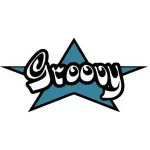Simple but powerful DSL using Groovy
We ended up with the idea that some kind of domain language for describing all those object types and relations is required. Here Groovy came on rescue. In this post I would like to demonstrate how powerful and expressive could be simple DSL written using Groovy builders.
As always, let’s start with POM file for our sample project:
01 02 03 04 05 06 07 08 09 10 11 12 13 14 15 16 17 18 19 20 21 22 23 24 25 26 27 28 29 30 31 32 33 34 35 36 37 38 39 40 41 42 43 44 45 46 47 48 49 50 51 52 53 54 55 56 | 4.0.0com.exampledsl0.0.1-SNAPSHOTjar UTF-8 junit junit 4.10 org.codehaus.groovy groovy-all 1.8.4 org.codehaus.gmaven gmaven-plugin 1.4 1.8 compile testCompile org.apache.maven.plugins maven-compiler-plugin 2.3.1 1.6 1.6 |
I will use the latest Groovy version, 1.8.4. Our domain model will include three classes: Organization, User and Group. Each Organization has a mandatory name, some users and some groups. Each group can have some users as members. Pretty simple, so here are our Java classes.
Organization.java
01 02 03 04 05 06 07 08 09 10 11 12 13 14 15 16 17 18 19 20 21 22 23 24 25 26 27 28 29 30 31 32 33 | package com.example;import java.util.Collection;public class Organization { private String name; private Collection< User > users = new ArrayList< User >(); private Collection< Group > groups = new ArrayList< Group >(); public String getName() { return name; } public void setName( final String name ) { this.name = name; } public Collection< Group > getGroups() { return groups; } public void setGroups( final Collection< Group > groups ) { this.groups = groups; } public Collection< User > getUsers() { return users; } public void setUsers( final Collection< User > users ) { this.users = users; }} |
User.java
01 02 03 04 05 06 07 08 09 10 11 12 13 | package com.example;public class User { private String name; public String getName() { return name; } public void setName( final String name ) { this.name = name; }} |
Group .java
01 02 03 04 05 06 07 08 09 10 11 12 13 14 15 16 17 18 19 20 21 22 23 24 | package com.example;import java.util.Collection;public class Group { private String name; private Collection< User > users = new ArrayList< User >(); public void setName( final String name ) { this.name = name; } public String getName() { return name; } public Collection< User > getUsers() { return users; } public void setUsers( final Collection< User > users ) { this.users = users; }} |
Now, we have our domain model. Let think about the way regular user can describe own organization with users, groups and relations between all these objects. Primarily, we taking about some kind of human readable language simple enough for regular user to understand. Meet Groovy builders.
01 02 03 04 05 06 07 08 09 10 11 12 13 14 15 16 17 18 19 20 21 22 23 24 25 26 27 28 29 30 31 32 33 34 35 36 37 38 39 40 41 42 43 44 | package com.example.dsl.samplesclass SampleOrganization { def build() { def builder = new ObjectGraphBuilder( classLoader: SampleOrganization.class.classLoader, classNameResolver: "com.example" ) return builder.organization( name: "Sample Organization" ) { users = [ user( id: "john", name: "John" ), user( id: "samanta", name: "Samanta" ), user( id: "tom", name: "Tom" ) ] groups = [ group( id: "administrators", name: "administrators", users: [ john, tom ] ), group( id: "managers", name: "managers", users: [ samanta ] ) ] } }} |
And here is small test case which verifies that our domain model is as expected:
01 02 03 04 05 06 07 08 09 10 11 12 13 14 15 16 17 18 19 | package com.example.dslimport static org.junit.Assert.assertEqualsimport static org.junit.Assert.assertNotNullimport org.junit.Testimport com.example.dsl.samples.SampleOrganizationclass BuilderTestCase { @Test void 'build organization and verify users, groups' () { def organization = new SampleOrganization().build() assertEquals 3, organization.users.size() assertEquals 2, organization.groups.size() assertEquals "Sample Organization", organization.name }} |
I am using this simple DSL again and again across many projects. It’s really simplifies a lot complex object models creation.
Reference: Simple but powerful DSL using Groovy from our JCG partner Andrey Redko at the Andriy Redko {devmind} blog






